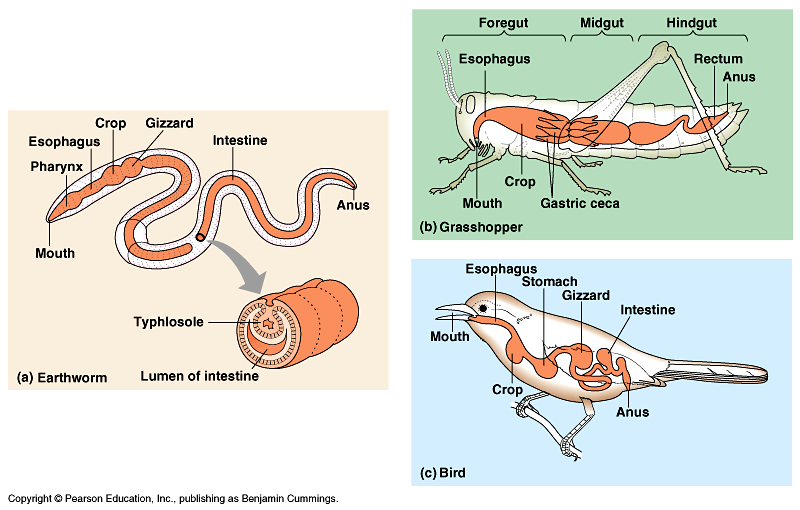C3.5 - Digestive System
Obtaining and Processing Food
- All organisms must have a way of obtaining essential nutrients
- heterotroph: organisms that depend on food made by others
- autotroph: organisms that can make their own food
- Food must be broken down to a size that can be passed through the cell membrane
Four Stages of Food Processing
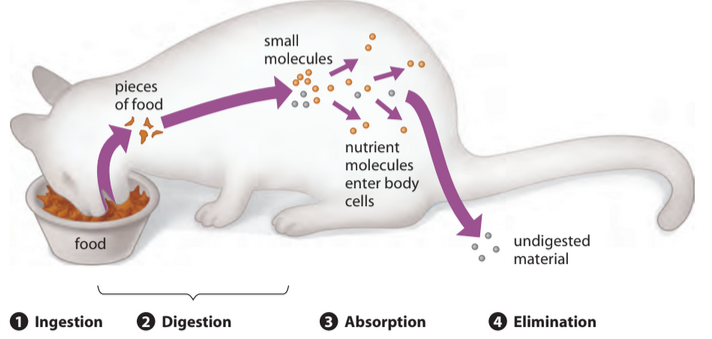
STEP I: Ingestion
ingestion: act of eating / drinking
STEP II: Digestion
- digestion: process of breaking food down into molecules that are small enough for the body to absorb
- mechanical digestion: processing food physically (i.e. chewing, chopping) to increase surface area
- chemical digestion: breaking down chemical bonds in nutrients of food into smaller molecules
- occurs during hydrolysis
- hydrolysis: process that breaks bonds into food molecules by adding water in presence of specific enzymes
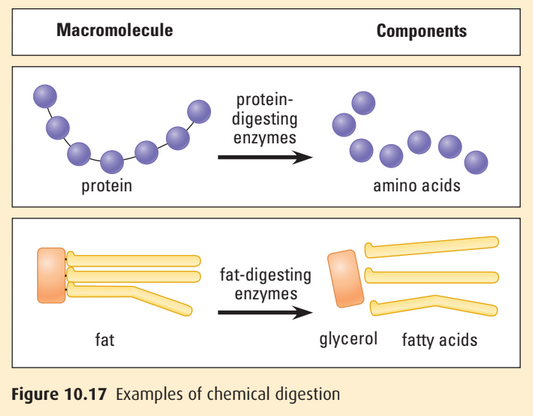
STEP III: Absorption
- absorption: process where cells absorbs small molecules like amino acids and simple sugars
- occurs in small intestine
- molecules enter blood then transported to body
- joined to make bigger molecules or broken down for energy
- excess molecules converted to fat for storage
STEP IV: Elimination
elimination: process of removing any undigested materials from digestive tract
feces: eliminated undigested material (commonly known as poop / shit)
Feeding Behaviours in Animals
- filter feeding: food is filtered from water by straining it
-
i.e. whales (baleen), molluscs (gills)
-
Baleen:
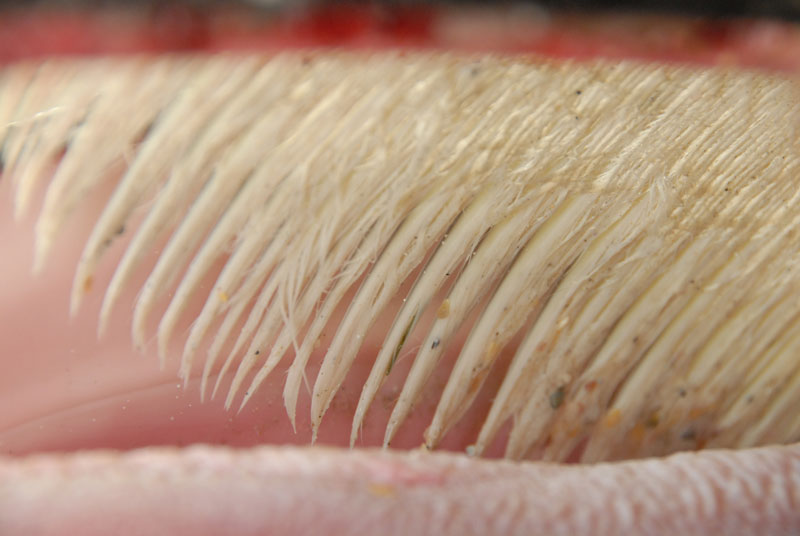
-
- fluid feeding: mouthparts adapted for piercing and sucking
- some also use digestive enzymes to break down their prey outside
- i.e. spiders, tapeworms, mosquitos
- bulk feeding: ingestion of large particles periodically
- requires development of more complex digestive system
- i.e. mammals
Digestion
| Intracellular Digestion | Extracellular Digestion |
|---|---|
| Engulfing of food by pirio/phagocytosis | Common in animals |
| Digestion occurs inside food vacuole | Open tube arrangement: mouth and anus (i.e. earthworms) |
| Closed tube has one opening serving both functions (i.e. sea anemone) |
- alimentary canal: digestive tract with two openings (mouth and anus)
- canal a.k.a. gastrointestinal (GI) tract (gastro = stomach)
- herbivores / omnivores have longer GI tract
- carnivores have shorter tract
- vegetation more difficult to digest than meat due to cell walls
- GI tract much longer in humans and many other animals than dist. between mouth and anus
phagocytosis: process where cell engulfs another cell to digest it
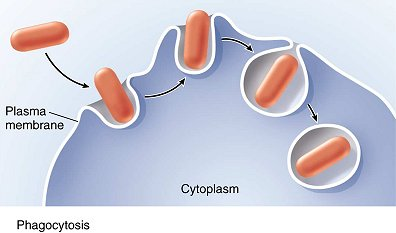
Extracellular Digestion
